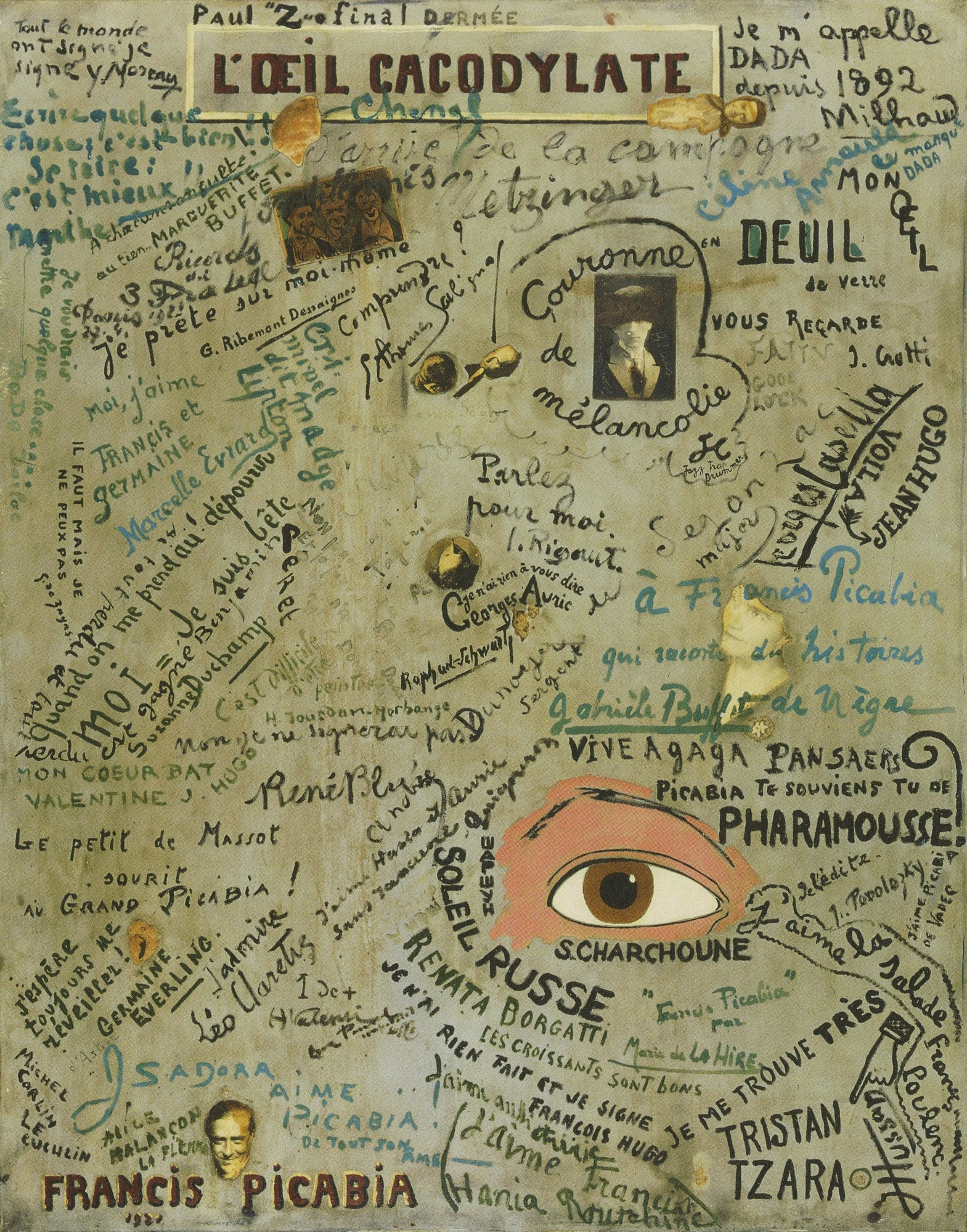The title of this work, L'Oeil Cacodylate, or the Cacodylic Eye, is based on this block letter inscription that Picabia painted at the top. And this inscribed title, along with the big brown eye you see down in the right hand corner, and the artist's name and date at the left, are the only elements strictly speaking believed to have been "created" by Picabia, in the sense of having been made by his hand.
This painting comes with a story. According to legend, Picabia began this painting while he was sick in bed with an eye infection. And his doctors prescribed something called Cacodylate de Sodium. And as friends came in to visit the ailing artist, he would invite them to add something to this large canvas. So, as you look at it, you can see all sorts of different signatures, collaged photographs, messages, and the result is really this radically new sort of a group portrait, that even after he was up and about, Picabia continued to invite friends and acquaintances to supplement.
Now, we might be used to seeing pictures that are made out of words. But at this point in time, this was a radical thing. There are hardly any images in this nominal painting. It is a work where text and writing predominates. It is also a work where Picabia's role as an author was someone who set up a situation in which he essentially invited his friends to contribute, to collaborate, to perform, and in that sense he opened up his work of art to complete chance, to automatic procedures. So the result is this wholesale reinvention not only of the idea of what a group portrait could be, but of what an art object could be as well.
To hear a conservator’s view of this painting, press six-five-four-four, and then the search button.
